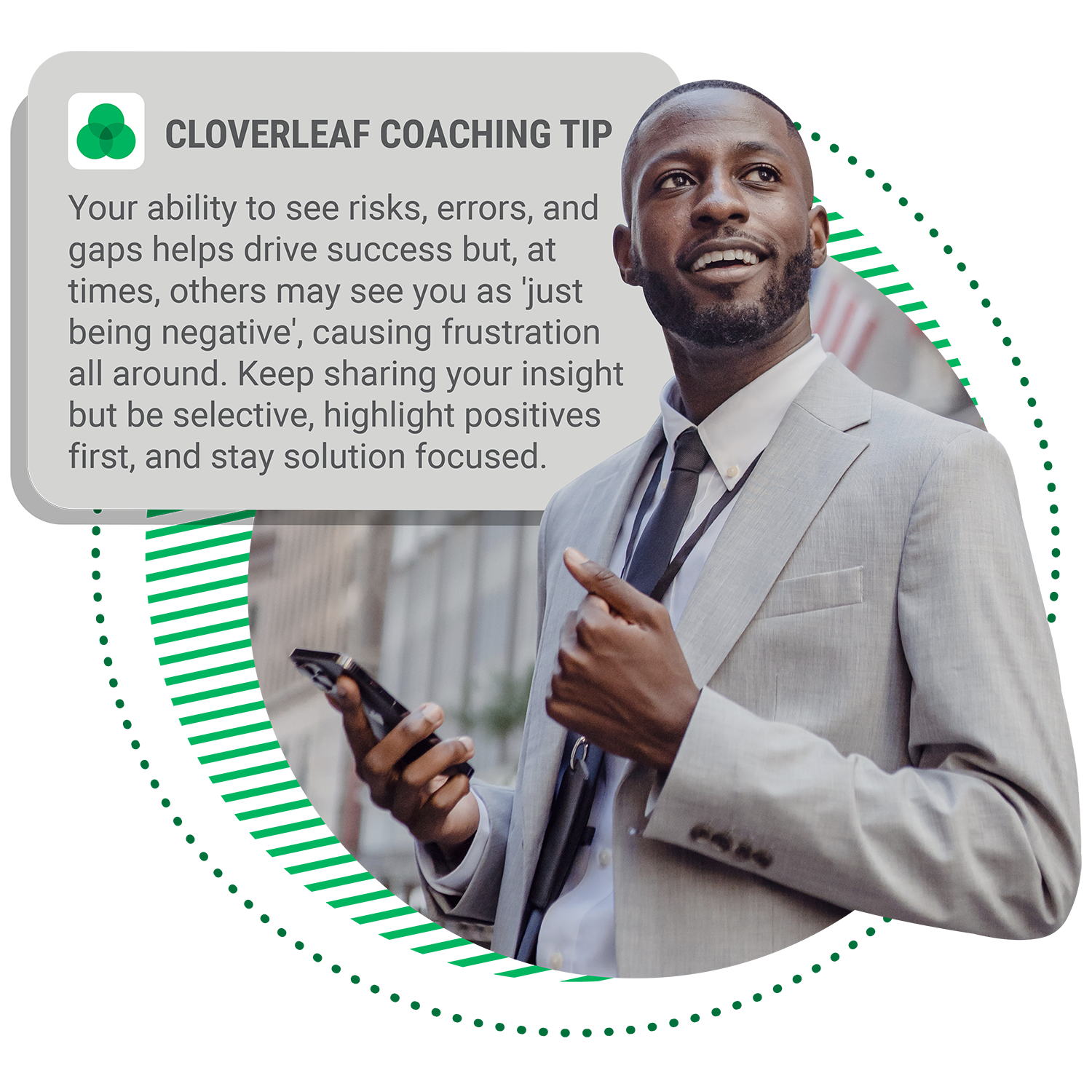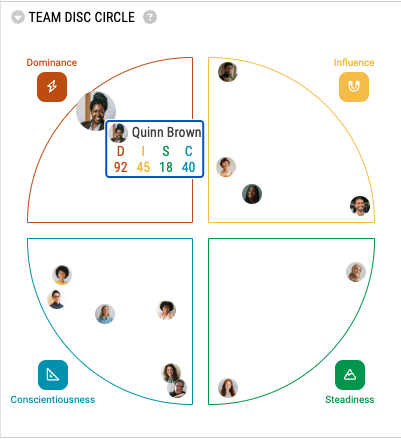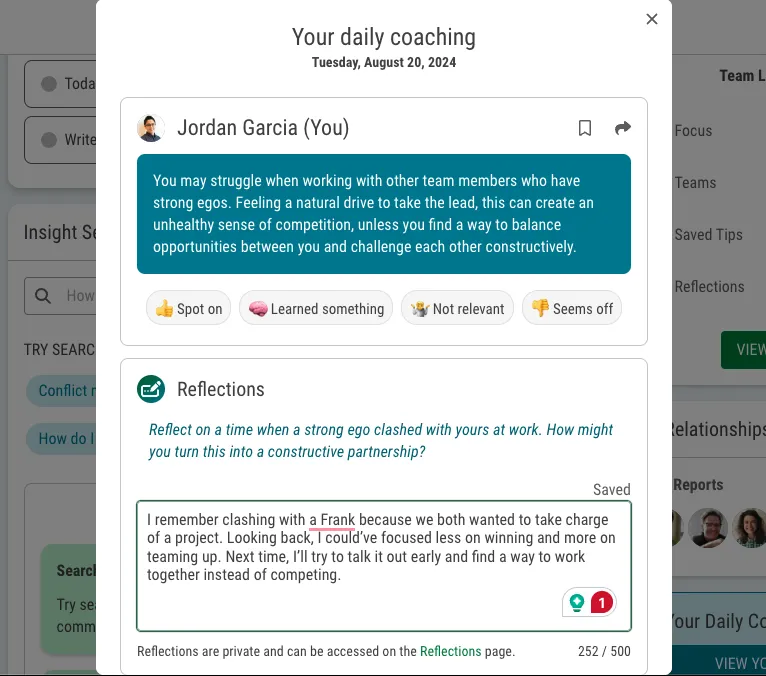We’ve all heard the stories—a newly hired C-Suite leader, brimming with technical expertise, suddenly finds themselves losing their cool in high-stakes meetings. The table-slamming, the shouting, the profanities—it’s a pattern that repeats itself far too often in organizations.
But what if these outbursts were more than just isolated incidents?
What if they were symptoms of a deeper issue that Talent Development Leaders must address?
In a conversation, a client shared his experience with a newly hired C-Suite leader who started to lose his cool a few months into the job. He described instances just like those above. It took HR exactly two weeks after a number of employees started to report these types of interactions to let the person go.
The gaps in this leader’s human skills, turned an amazing opportunity into a humiliating failure for him. While he was technically highly proficient and had the exact experience and background the company needed, none of it could save him.
When these kinds of behaviors surface, they often stem from gaps in essential human skills like emotional intelligence and conflict management. These gaps can turn extraordinary opportunities into catastrophic failures—not just for the individual but for the entire organization. While technical proficiency and experience are critical, they cannot compensate for the lack of core human skills that are crucial for effective leadership. To address these leadership breakdowns, we must look beyond the surface and tackle the root causes head-on.
Addressing the Root Causes of Leadership Failures
While it’s easy to focus on the visible manifestations of leadership breakdowns—like the outbursts and poor behavior mentioned earlier—the real challenge lies in addressing the underlying causes. These incidents are often symptomatic of deeper issues such as unaddressed stress, inadequate emotional intelligence, and a lack of continuous development in critical human skills. For Talent Development Leaders, this is where the opportunity—and responsibility—truly lies.
Improving human skills isn’t solely about avoiding such dramatic fallouts. It’s about proactively building social and human capital within the organization, creating an environment where employees can experience meaningful personal growth that makes them not just better professionals but better leaders.
Conventional approaches to leadership development often fail to provide the ongoing support managers need to navigate today’s complex work environments. Continuous development isn’t just a best practice—it’s a necessity, given the increasing pressures on leaders.
People skills are not just a benefit but a requirement. Organizations can no longer afford to take a reactive approach. Leaders need real-time, personalized insights to manage stress, improve emotional intelligence, and maintain their composure in high-pressure situations.
For organizations, the stakes extend beyond individual incidents. The ripple effects of a leadership failure can be felt across teams, departments, and even the entire organization. By proactively equipping leaders with the tools they need to succeed—not just through traditional training but through continuous, context-specific coaching—you can build a resilient leadership culture that not only prevents failures but also supports consistent growth and development.
How To Improve Human Skills In Management: From Big Picture Vision to Ground-Level Growth

Top-Down Leadership: Aligning Strategy with Human Skills
Misalignment in leadership values and approaches is more than just a growing pain—it’s a critical risk that can derail organizational success. When leaders are not aligned on core values and competencies, it leads to inefficiencies, employee dissatisfaction, and, ultimately, missed business objectives.
Step 1: Define Core Leadership Values and Competencies
The first step is clearly defining the leadership values and competencies critical to your organization’s success. This involves identifying the key qualities and skills that every leader should embody, from the C-Suite to middle management. These values should reflect the company’s long-term goals and cultural priorities.
For example, an engineering team at a startup might have been built up by a leader who cultivated a flexible work environment and prioritized mental health. However, as the company grows, it may bring in a CTO with a different leadership style that emphasizes performance in high-pressure environments. This shift can lead to misalignment if the core values and competencies are not clearly defined from the top.
Step 2: Communicate and Align Leadership Teams
Once these values and competencies are defined, the next step is communicating them across all leadership levels. Every leader must understand and buy into these principles. Regular alignment meetings, workshops, and leadership training sessions can effectively ensure that all leaders are on the same page.
To prevent misalignment, organizations must define their desired leadership values and approaches from the top down. However, defining these values is only the first step. Continuous alignment and reinforcement are necessary to ensure these values are lived daily.
Step 3: Utilize Continuous Feedback and Coaching Tools
With core values and competencies defined and communicated, the focus shifts to continuous alignment and reinforcement. This is where tools like Automated Coaching can strengthen culture and support ongoing development. By providing leaders with real-time, personalized insights, these tools help reinforce the company’s core values and leadership competencies in every interaction, ensuring that leaders consistently model the behaviors expected of them.
Step 4: Identify Skill Gaps Using Data-Driven Insights
The next step is to identify potential skill gaps among current leaders. This process should be driven by data, leveraging tools that comprehensively analyze where leaders stand regarding the desired competencies. Cloverleaf’s platform, for instance, offers detailed assessments and continuous feedback, enabling organizations to create targeted, data-driven learning paths that address these gaps effectively.
Step 5: Implement Targeted Development Programs
Finally, after identifying the gaps, organizations should execute targeted development programs. These programs should be designed to address specific gaps and reinforce the core competencies identified earlier. Regularly reviewing progress and adjusting these programs as needed will ensure that the development is ongoing and aligned with evolving organizational needs.
Ultimately, a well-executed top-down approach to leadership development, supported by continuous alignment and personalized coaching, helps individual leaders succeed and drives the organization toward its strategic goals. By ensuring that every leader is on the same page and equipped with the necessary skills, companies can build a resilient leadership culture that is ready to navigate the complexities of today’s business environment.

Ready To Build Human Skills At Scale With Your TEam?
- Close the gap between learning and on-the-job application
- Personalize growth to individual strengths and needs
- Integrate learning so it is actually in the flow of work
- Develop human skills fast enough to solve business problems
- Prove the ROI of your development programs

Bottom-Up Leadership: Building Skills from the Ground Up
While top-down alignment is critical, developing human skills within your managers through a bottom-up approach is equally vital. This method is not an alternative but a complementary strategy that, when combined with top-down efforts, yields the best results.
Step 1: Establish a Foundation of Self-Awareness
The journey begins with self-awareness, much like constructing a sturdy building requires a strong foundation. Managers must first understand their own strengths and weaknesses, recognize their natural talents, and identify areas for growth. This self-awareness forms the basis for all personal development and leadership growth.
In a study highlighted by Harvard Business Publishing, leaders who actively engaged in self-awareness exercises, such as using the “Ladder of Inference,” significantly improved their decision-making and ability to adapt as a leader. These leaders were better equipped to manage their emotional responses and lead more effectively by consciously reflecting on their thought processes and challenging their assumptions. Organizations that integrate tools to facilitate this type of reflection are better positioned to build leaders who possess a high degree of self-awareness and can remain calm and focused in the face of adversity.
Step 2: Personalized Development Journeys
Learning becomes more fruitful when managers understand their development journey and see how building on their strengths while addressing gaps can accelerate their career growth. This recognition of the organization’s investment in its growth builds trust and loyalty as managers receive the personalized support they need to enhance their performance and increase the value they bring to the organization.
The success of the bottom-up approach relies heavily on the manager’s ability to drive their learning. Continuous support and personalized feedback are critical. The following section will cover the APS Method for leadership development as a tool to support managers in developing human skills.

The APS Method for Leadership Development
The APS Method stands for Awareness, Principles, and System and is a framework for leadership development. It is a proprietary method developed by Archova that examines human skills not just tactically but incorporates the importance of awareness to begin with, the guiding principles and values that underlie a leader’s skill set, and the systematic approach to ensure skills are incorporated into and reflected by the leader’s routines and behaviors.
1. Awareness: The Foundation of Leadership Development
Awareness is the foundation of the APS Method. It involves understanding yourself as a leader—your strengths, growth areas, natural leadership style, and how you may respond to different situations. Developing self-awareness allows you to see how your behaviors and actions influence your team. It’s about knowing what makes you tick and how your actions affect others.
However, for managers to develop strong human skills, they need to become more than just self-aware; they also need to become aware of the preferences, strengths, and styles of those they work with, such as their manager, their direct reports, and other stakeholders. This awareness allows them to engage effectively with a range of different people and personalities.
Tools like Cloverleaf’s DISC assessment can be a great starting point for managers to identify their natural tendencies and possible blind spots and learn about others. Knowing we may be relationship-driven and inspired by new ideas is one thing. Still, it’s another to realize that a key person on your team operates best with clear guidelines, solid project plans, and a high degree of independent work. This dynamic, for example, will call for the manager to engage in a different approach than the type of leadership style they might personally prefer. The ability to see the DISC profiles of an entire team is a key benefit Cloverleaf offers.

2. Principles: Guiding Leadership with Core Values
Principles are the core beliefs that guide your actions and decisions. These are the enacted values you stand by and use to navigate your leadership journey. For example, principles might include acting with integrity, assuming positive intent, and putting people before productivity.
Why It Matters: Leaders without clearly defined principles often seem reactive and can easily be swayed in their decision-making process. When leaders define their principles and communicate them to others, the team tends to see consistency and reliability, which increases trust and makes it easier for them to work effectively with their leader.
3. System: Establishing Structured Routines and Practices
System refers to the structured routines and practices you implement as a leader. It involves creating and maintaining processes that ensure effective team management, such as regular one-on-one meetings, feedback loops, and performance tracking. A solid system helps you lead your team predictably and efficiently, allowing for better outcomes and a more cohesive team environment.
How Leaders Can Use the APS Method to Help Managers Strengthen Human Skills
The APS Method provides a clear path for leaders to develop their human skills through self-awareness, strong guiding principles, and effective systems. Here’s how you can apply these concepts practically, day-to-day.
1. Applying Self-Awareness in Leadership
Developing self-awareness and awareness of others is crucial for effective leadership. Here are some practical steps:
- Conduct Regular Self-Assessments: Use tools like DISC, Enneagram, or 16 Types to understand your leadership style, strengths, and growth areas. Leveraging multiple assessments gives you a nuanced understanding of yourself and your team, allowing for more informed decision-making and personalized leadership strategies.
- Seek Feedback from Team Members: Regularly gather feedback from those you work with to gain diverse perspectives on how your leadership style impacts others. This input helps identify areas for improvement that you might not see on your own.
- Reflect on Your Responses and Behaviors: Consider how your tendencies influenced recent interactions and what adjustments you might need to make. Use tools like the Reflections feature to regularly assess how your actions and decisions align with your self-awareness insights.

2. Establishing Your Leadership Principles
Leadership principles guide your decisions and actions, ensuring consistency and integrity in your leadership style. Here’s how to define and implement these principles effectively:
- Define Your Core Leadership Values: Begin by identifying the values that are most important to your leadership. Write these values down and think about the principles that best represent them. Consider how you will demonstrate these values in your daily leadership practices—how will your team see and experience these values in action?
- Communicate These Principles to Your Team: Once you’ve defined your principles, clearly communicating them to your team is essential. This ensures that everyone understands the standards you hold yourself to and can align their expectations accordingly.
- Regularly Review and Adapt Your Principles: Leadership is dynamic, and your principles may need to evolve as you and your organization grow. Set aside time to review your leadership principles regularly to ensure they remain relevant and effective. If you find that certain principles need adjustment, be open to making those changes and communicating them to your team.
3. Developing Your Leadership System
Creating a leadership system is about establishing routines and practices that reinforce your principles and self-awareness. This system should be flexible, allowing you to adapt as you grow and as your team’s needs evolve.
Here are three simple ways to build and maintain your leadership system:
1. Establish Regular Routines and Check-Ins
- Create Consistent Check-Ins: Schedule regular one-on-one meetings with your team members. These meetings provide opportunities to discuss progress, challenges, and development goals. Consistency in these check-ins helps build trust and ensures that your team feels supported.
- Set Up Feedback Loops: Implement a structured feedback system that includes both giving and receiving feedback. This system should encourage open communication and ensure timely and constructive feedback. Regular feedback helps identify areas for improvement and fosters a continuous growth culture.
2. Monitor and Adjust Your System
- Track Performance and Progress: Implement performance-tracking mechanisms to monitor how well your leadership practices work. Use tools and metrics to assess whether your routines and practices are helping you achieve your leadership goals.
- Reflect and Adjust: Regularly reflect on the effectiveness of your leadership system. Consider whether your routines produce the desired outcomes and adjust as needed. This reflection ensures that your system evolves with your leadership journey.
3. Document Your Leadership System
- Create a Leadership Playbook: Document your leadership system, including your routines, principles, and feedback processes. This playbook serves as a reference for yourself and can be shared with others in leadership roles to ensure consistency across the organization.
- Regularly Update Your Documentation: Keep your documentation updated as your leadership practices evolve. This living document will help you stay aligned with your goals and ensure that your leadership approach remains relevant and effective.
A Strategic Path to Leadership Excellence
By focusing on the three pillars of the APS Method—Awareness, Principles, and System—leaders can adopt a proactive, reflective, and systematic approach to developing human skills. This not only leads to sustainable results and continuous improvement but also cultivates a leadership culture that thrives on growth and adaptability.
The importance of developing human skills cannot be overstated. The downfall of technically proficient yet emotionally unaware leaders highlights the need for a balanced approach that marries technical expertise with strong interpersonal skills. These skills are not merely complementary; they are essential for navigating the complexities of modern leadership.
A Dual Approach for Lasting Impact
Adopting both a top-down and bottom-up approach to building human skills enables organizations to create a cohesive leadership culture that aligns with their core values while empowering individual leaders on their personal growth journeys. This dual strategy ensures that leadership development is holistic, addressing both organizational alignment and individual capabilities.
The APS Method offers a practical, actionable framework for managers to cultivate the essential human skills that define effective leadership. By integrating self-awareness, clearly defined principles, and structured systems into daily practice, leaders can ensure that their growth is consistent and deeply embedded in their leadership style.
Moving Forward: Building a Thriving Leadership Culture
Investing in developing leadership competencies is not just a preventive measure against leadership failures; it’s a strategic move to nurture an environment where leaders and their teams can thrive. This investment pays dividends in the form of resilient, adaptable teams that are capable of driving the organization forward in an ever-changing landscape.
As you reflect on the concepts discussed, consider how you can begin to apply the APS Method within your own leadership context. Start by assessing where you currently stand regarding self-awareness, principles, and systems. Then, take concrete steps to enhance these areas, using the tools and strategies provided. The journey towards leadership excellence is continuous, but with the APS Method and tools like Automated Coaching, you have a clear path to follow.








